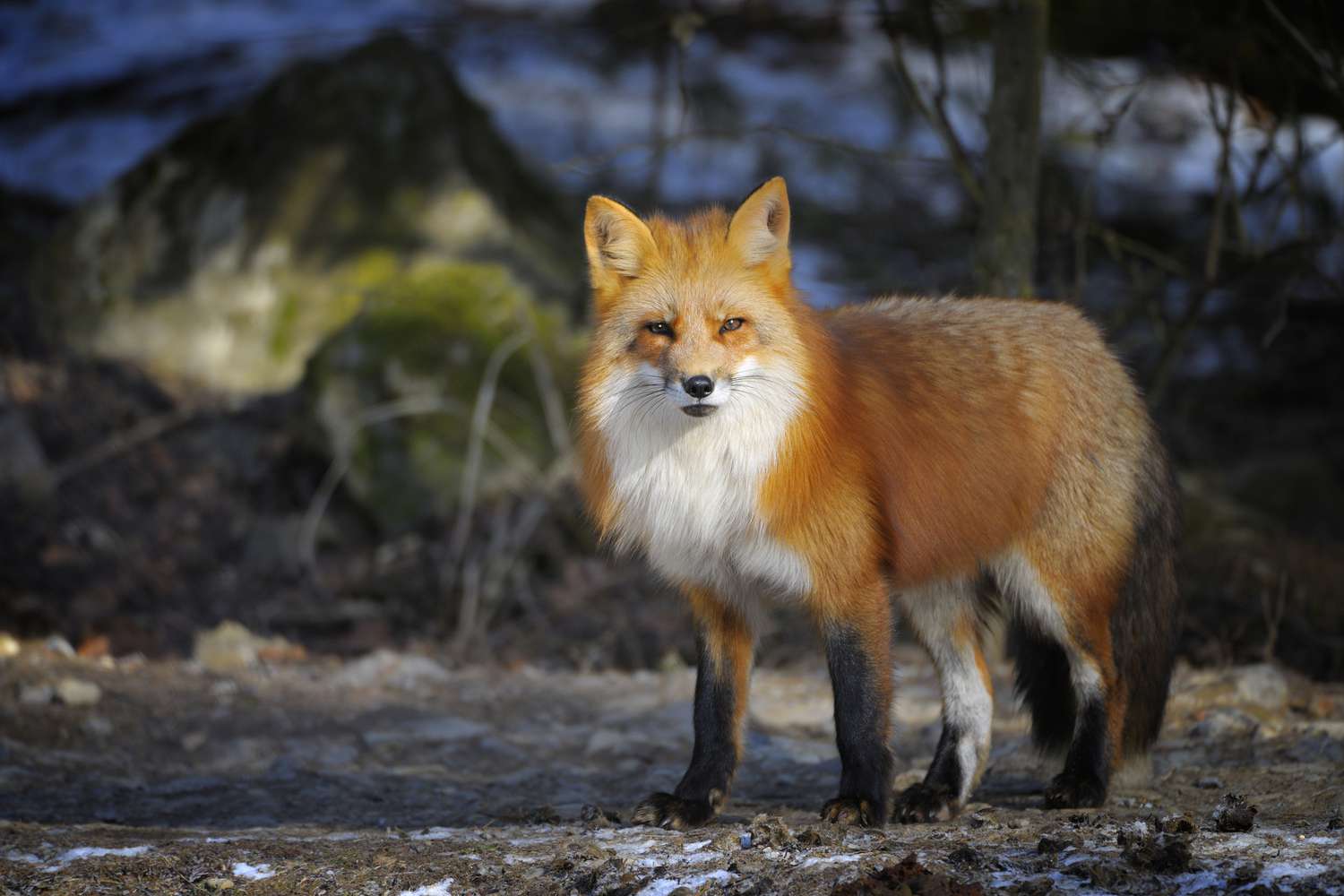
The red fox (Vulpes vulpes) is a fascinating and adaptable creature that has captured the imagination of people around the world. Known for its striking red fur and bushy tail, the red fox is a highly intelligent and resourceful animal that has thrived in diverse environments, from forests and grasslands to urban areas. With its keen senses and agile nature, the red fox has earned a place in folklore, literature, and popular culture, symbolizing cunning and resilience.
In this article, we will delve into 18 captivating facts about red foxes, shedding light on their behavior, habitat, diet, and unique characteristics. From their remarkable hunting abilities to their complex social structures, red foxes offer a wealth of intriguing insights that showcase their remarkable adaptability and survival skills. Join us on an exploration of the world of red foxes, and discover the remarkable traits that make them one of the most captivating creatures in the animal kingdom.
Key Takeaways:
- Red foxes are clever hunters with a diverse diet, living in family groups called “leashes.” Their beautiful red coats provide excellent camouflage, and they play a vital role in ecosystems by regulating prey populations and scavenging carrion.
- Red foxes are agile athletes, capable of reaching speeds of up to 30 miles per hour. They are highly adaptable creatures, with a wide distribution spanning from the Arctic Circle to North Africa, Europe, Asia, and North America.
Red Foxes are Highly Adaptable Creatures
Red foxes (Vulpes vulpes) are highly adaptable creatures found in diverse habitats across the Northern Hemisphere. Renowned for their intelligence and cunning nature, these fascinating animals have captured the imagination of people worldwide. Here are 18 intriguing facts about red foxes that shed light on their remarkable characteristics and behavior.
Red Foxes Are Excellent Hunters
Red foxes are skilled hunters with a diverse diet. Their keen sense of hearing allows them to locate prey beneath the snow, and they can pounce with remarkable precision to catch small mammals, birds, and insects. They are also opportunistic feeders, consuming fruits, vegetables, and carrion when available.
Red Foxes Are Masters of Disguise
The red fox's beautiful red coat provides excellent camouflage in the forest, helping them blend seamlessly into their surroundings. Additionally, their long, bushy tails aid in balance and serve as a warm cover during cold weather.
Red Foxes Are Agile Athletes
Red foxes are agile and swift animals, capable of reaching speeds of up to 30 miles per hour when in pursuit of prey. Their remarkable athleticism enables them to navigate various terrains with ease, making them formidable hunters.
Red Foxes Have Complex Social Structures
Red foxes exhibit complex social behaviors, living in small family groups known as "leashes." These groups are typically composed of a dominant male, his mate, and their young. The family works together to raise and protect their offspring, fostering a strong sense of unity within the group.
Red Foxes Communicate Through Vocalizations
Red foxes are vocal animals, communicating through a diverse range of sounds, including barks, screams, and howls. These vocalizations serve various purposes, from signaling territory boundaries to expressing aggression or seeking mates during the breeding season.
Red Foxes Are Nocturnal Creatures
Red foxes are primarily nocturnal, preferring to hunt and roam during the cover of night. Their exceptional night vision and acute sense of smell aid them in navigating their surroundings and locating prey in the darkness.
Red Foxes Are Highly Intelligent
Red foxes are known for their intelligence and problem-solving abilities. They exhibit curiosity and adaptability, traits that have contributed to their success in a wide range of environments.
Red Foxes Have a Wide Distribution
Red foxes have a broad geographic range, spanning from the Arctic Circle to North Africa, Europe, Asia, and North America. Their adaptability to various climates and habitats has enabled them to thrive in diverse ecosystems.
Red Foxes Are Meticulous Groomers
Red foxes are meticulous groomers, dedicating significant time to grooming their coats to remove parasites and maintain insulation. Their fastidious grooming habits contribute to their sleek and well-kept appearance.
Red Foxes Are Expert Diggers
Red foxes are proficient diggers, using their sharp claws to excavate elaborate burrow systems known as "dens." These dens serve as shelters for raising their young and provide protection from predators and harsh weather conditions.
Red Foxes Are Monogamous Breeders
Red foxes are monogamous breeders, with the mating season typically occurring in late winter. After a gestation period of about 52 days, the female gives birth to a litter of adorable, playful pups, known as "kits."
Red Foxes Are Highly Territorial
Red foxes are territorial animals, marking their territories with urine and feces to communicate ownership and deter potential intruders. They exhibit strong territorial behaviors, defending their home ranges from other foxes.
Red Foxes Have a Varied Vocal Repertoire
Red foxes possess a diverse vocal repertoire, capable of producing an array of sounds to convey different messages. From high-pitched screams to rhythmic barks, their vocalizations play a crucial role in social interactions and territorial communication.
Red Foxes Undergo Seasonal Color Changes
Red foxes undergo seasonal color changes, with their coats transitioning from a vibrant red or orange hue in the summer to a thicker, paler fur in the winter. This adaptation provides effective camouflage in snowy environments, enhancing their hunting prowess.
Red Foxes Are Symbolic in Folklore and Mythology
Red foxes hold significant cultural symbolism in various societies, often portrayed as cunning and intelligent characters in folklore and mythology. Their elusive nature and striking appearance have inspired numerous legends and stories across different cultures.
Red Foxes Are Resilient Survivors
Red foxes are resilient survivors, capable of overcoming environmental challenges and human-induced changes to their habitats. Their adaptability and resourcefulness have enabled them to thrive in diverse landscapes, showcasing their remarkable ability to coexist with humans.
Red Foxes Play an Integral Role in Ecosystems
Red foxes play an integral role in ecosystems as both predators and scavengers. By regulating prey populations and scavenging carrion, they contribute to the balance of natural food webs, exerting a positive influence on the health and dynamics of their respective habitats.
Red foxes are truly captivating animals, embodying a blend of intelligence, agility, and adaptability that has earned them a special place in the natural world. Their enduring presence across diverse landscapes serves as a testament to their remarkable resilience and ability to thrive in ever-changing environments. As we continue to marvel at the enchanting nature of red foxes, it becomes evident that their legacy as iconic creatures will endure for generations to come.
Conclusion
In conclusion, red foxes are fascinating creatures that have captured the hearts and imaginations of people around the world. Their remarkable adaptability, intelligence, and striking physical features make them a truly remarkable species. From their diverse habitats to their complex social structures, red foxes continue to intrigue and inspire both wildlife enthusiasts and researchers alike. By understanding and appreciating the unique characteristics and behaviors of red foxes, we can contribute to the conservation and preservation of their natural habitats, ensuring that future generations can continue to marvel at the beauty and resilience of these captivating animals.
FAQs
What do red foxes eat?Red foxes are omnivores, with a diet that includes small mammals, birds, insects, fruits, and vegetables. They are opportunistic hunters and scavengers, adapting their diet based on seasonal availability.
Are red foxes dangerous to humans?Red foxes are generally not a threat to humans. They tend to avoid contact with people and are known for their elusive nature. However, like any wild animal, they should be observed from a safe distance to avoid potential conflicts.
Red foxes are truly remarkable animals, with their adaptability, intelligence, and unique characteristics. If you enjoyed learning about these cunning creatures, you might also be interested in exploring the world of RedFOX Labs, a pioneering technology company named after these fascinating animals. Additionally, did you know that there are many different types of foxes, each with their own distinct traits and habitats? Discover more about the diverse fox family and the innovative projects of RedFOX Labs in our related articles.
Was this page helpful?
Our commitment to delivering trustworthy and engaging content is at the heart of what we do. Each fact on our site is contributed by real users like you, bringing a wealth of diverse insights and information. To ensure the highest standards of accuracy and reliability, our dedicated editors meticulously review each submission. This process guarantees that the facts we share are not only fascinating but also credible. Trust in our commitment to quality and authenticity as you explore and learn with us.


